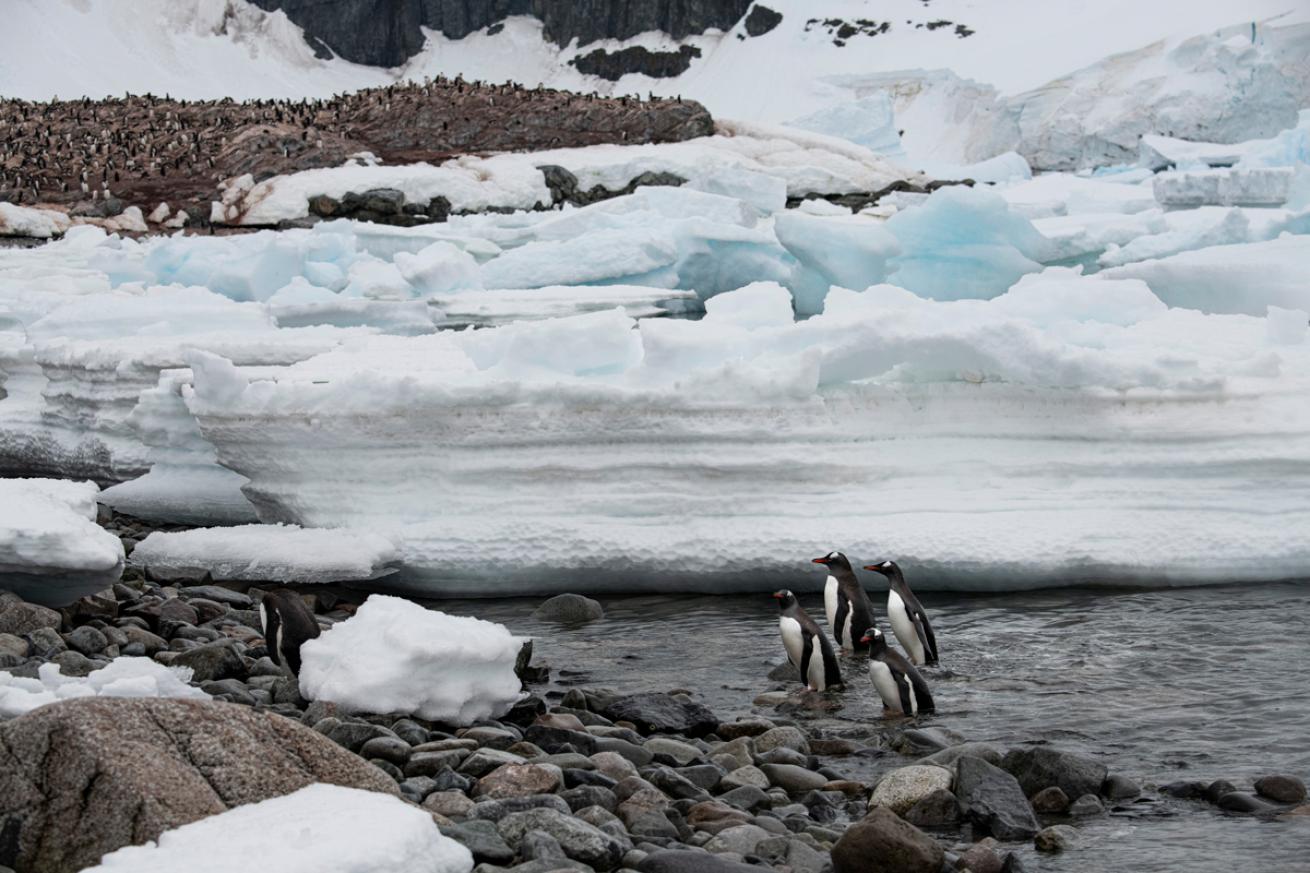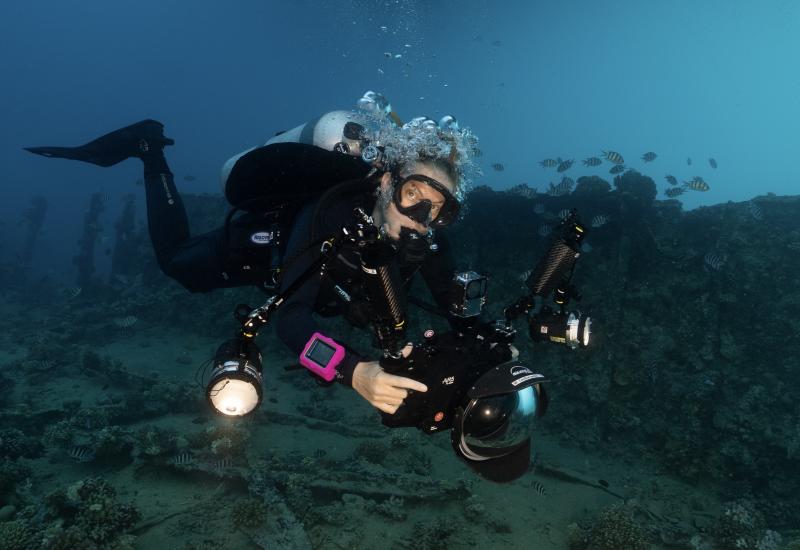Stunning Photos from the First Antarctic Dive Expedition in Two Years
With travel to Antarctica suspended in early 2020, no one had visited the white continent let alone dive there in nearly two years. I’m told we were the first divers to gear up and splash into the icy water in early January. The feeling of excitement was overwhelming to be back in the most remote and least explored place on the planet. I sat on the rigid inflatable boat (RIB), holding my camera, and looked out at glaciers, icebergs and the penguins jumping around the boat and al- most cried. It was my third trip here, but it was also the most special.

Becky Kagan SchottIcebergs everywhere.
Ice diving is exciting because you’ll never dive the same iceberg twice. They are constantly changing, breaking, flipping and melting. Choosing the right iceberg to safely dive is important. We try to find one that’s grounded and flat on top so no pieces can break off. There were a lot of choices in the bays where icebergs get stuck. The water is generally clear, and water temps fall anywhere between 28 and 32 degrees.

Becky Kagan SchottAn extreme photo shoot.
As I descended, I put my hand out and felt the smooth, cold ice. I got a rush of excitement diving such a unique environment, admiring how the ice sparkles when the light hits it. This photo shoot was for Seiko Watches to showcase and dive the new Ice Diver special edi- tion diver’s watches and the Save the Ocean Collection, inspired by the textures and colors in this very ice.

Becky Kagan SchottPatterns at the bottom of the world.
Within an hour, the weather can go from snowing to foggy to sunny to over- cast. I really enjoy cruising around the ice in the RIB. It’s not uncommon to see jumping penguins, whales and seals, and feel the boat go over the bumpy, bergy bits of ice. Being able to see the textures in the ice is mesmerizing. The scalloping is caused when the iceberg melts underwater until it becomes too top-heavy and flips over to expose new features. Underwater, the ice looks translucent, and it can also have interesting cracks and occasionally a halocline from fresh and salt water mixing.

Becky Kagan SchottAntarctica's apex predator: the leopard seal.
Leopard seals hunt unsuspecting penguins around the ice. Having the opportunity to be in the water with one is a special experience, keeping your eye on the fast-moving pinniped as it zips around checking everyone out. They can be very curious and come right up to you, but it’s good not to let your guard down. This particular seal stayed with us for over an hour, and we made sure to give it space to not feel threatened.

Becky Kagan SchottPenguin parenting.
Gentoo penguins nest on bare rock and use smaller stones to build nests. These stones can be given to female penguins as gifts. They usually lay eggs in December; chicks hatch about 35 days later. During our early January trip, the chicks weren’t hatched yet. There was a lot of ice on the beach, making it challenging for the penguins to reach the water from their rookery. We observed a lot of penguins walking the beach, searching for a suitable place to enter the water.

Becky Kagan SchottLarger than life.
Like fingerprints, each iceberg is unique. Ice with deep shades of blue means it’s some of the oldest glacial ice where all the air bubbles have been squeezed out. Antarctica seems like it’s so far away, and yet it only takes a few days to get there. It’s not a mythical place only existing in books—it’s real, and going there is like visiting another planet. There’s so much life, including penguins, seals and whales, everywhere you look. It’s changing and is threatened not only by warming but increased fishing pressure, pollution and invasive species. Antarctica inspires me and brings tears to my eyes each time I see it. I hope it inspires you to learn more, explore and protect it for the future.














